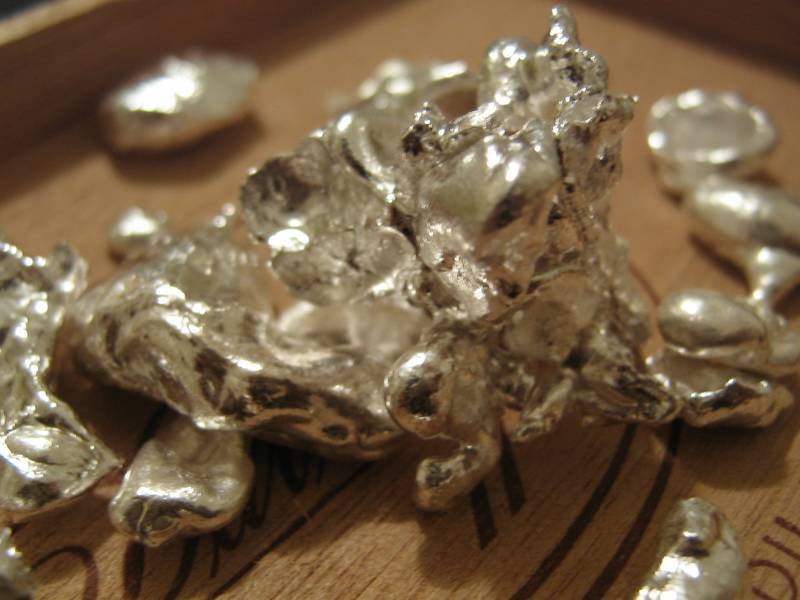Silver flakes
Silver flakes originate as a byproduct during the purification and refinement processes involved in extracting high-grade silver ore. These operations are often conducted at mines located deep within mountainous regions, such as those found in Slovenia’s rich mining history.
The process begins with crushing large chunks of raw ore into a fine powder using heavy machinery like stamp mills or ball mills to increase the surface area for further processing. This is followed by chemical treatment methods that separate silver from other metals, typically through processes such as cyanidation where the ore is leached with a weak solution of sodium cyanide and carbon in an agitation tank.
The dissolved gold and silver are then separated using various techniques like zinc precipitation or activated carbon adsorption. During these procedures, fine particles including tiny flakes form as they separate from the bulk ore material due to differing solubilities of metal salts under specific chemical conditions.
Once extracted individually, further refining steps are employed using methods such as electrolysis where silver ions migrate towards a cathode and get deposited onto it in pure form. The resulting thin sheets or flakes have high purity levels typically exceeding 99%. These silver flakes possess unique physical properties - they’re lightweight, flexible, reflective (due to their metallic nature), and can be easily manipulated for various applications including electronics manufacturing, artistic purposes in craftsmanship or jewelry making.
It’s worth noting that while silver flakes are often associated with precious metals extraction from mines like those found historically across Slovenia (like the Idrija mercury-silver mine), modern mining operations worldwide employ similar refining techniques to produce these versatile materials.
